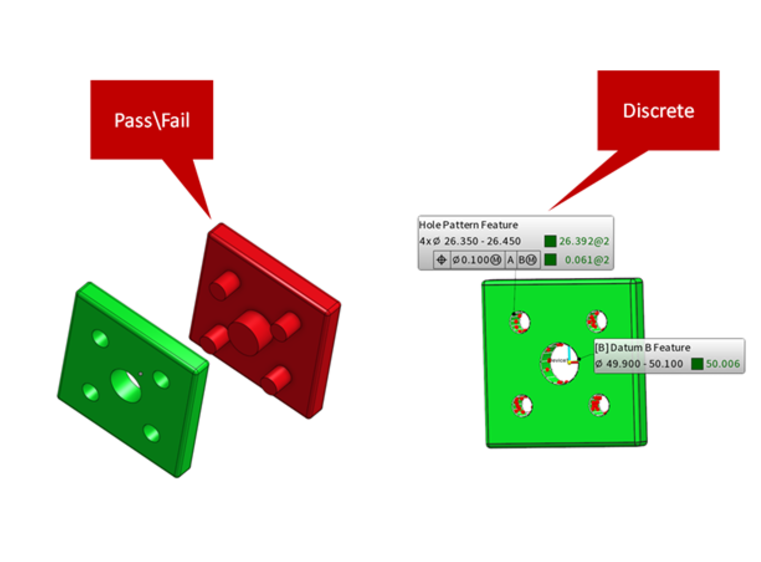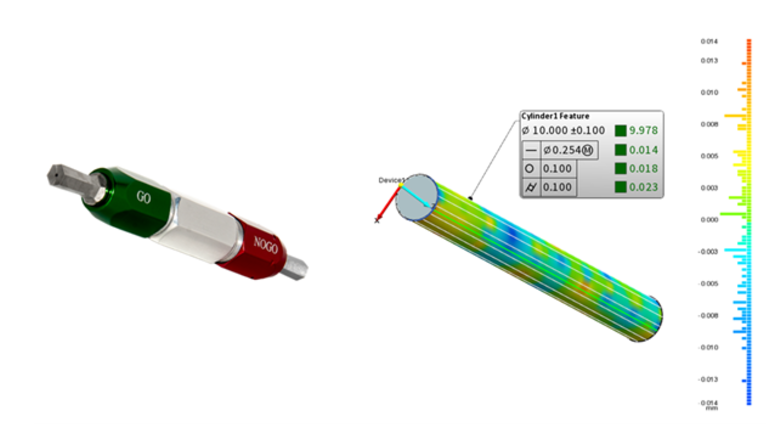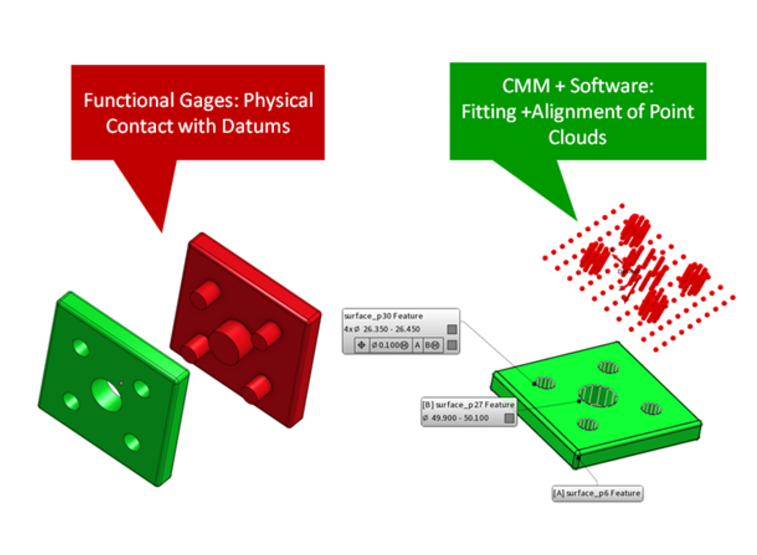In this blog post, we will take a look at the advantages of software metrology over classical metrology, comparing the level of information that can be obtained for workflows used to achieve similar goals.
More Information
Classical Metrology
With a hard gauge, such as a go/no-go gauge shown on the left in Figure 1 (above), one can only determine if the part dimensions lie within the tolerance limits, and the decision is binary; pass or fail.
Software Metrology
As opposed to this, inspection software coupled with a state-of-the-art device can provide us with a wealth of information. As shown in Figure 2, even with a very simple part such as a pin, we can check the diameter, straightness, roundness and cylindricity values along with surface deviation information for all points on the part.
Most of all, we have discrete values for all the concepts we measure with an inspection software, such as 14 micrometers for straightness or 18 micrometers for roundness on the part in Figure 1, right. We can use these values to control our processes. We can decide on the optimum values and use these to detect changes in the process over time. Thus corrective actions can be taken before the limit values are exceeded. Preventive measures can be carried out, and errors avoided.

Figure 2. Software metrology versus classical metrology: With software metrology, we use the same software for more complex parts, while we have to manufacture more complex gauges with classical metrology.
More Flexibility
Classical Metrology
As your parts get more complex your gauges would get more complex too. With a functional gauge like in Figure 2 (left), verifying only 4 holes could be very costly to manufacture since, as a rule of thumb, the gauge should be ten times more precise than the part it is designed to measure.
Software Metrology
Whereas with an inspection software combined with a state of the art measurement device, you would use the same tools for a complex assembly as you would for a simple part. The tools are highly scalable. Moreover, it is possible to provide evaluation values for all the individual features along with the evaluation of the whole part. In this example with BuildIT software, we have the diameter and position tolerance values for all of the tolerances (Figure 2, right).
Figure 3. Software metrology versus classical metrology: With software metrology, we use clouds aligned to fitted geometric entities, while with classical metrology, we have physical datums on functional gauges.
More Robustness
Classical metrology
We have functional gauges “fitting” into parts. Datums and features are all physically defined, so the metrologist has a very physical contact with the entities he’s analyzing. At the same time, the physical gauges are vulnerable to wear and tear and must be regularly calibrated.
Software metrology
We have clouds aligned to cad models, or more precisely to datums created by different fits (such as tangent plane for planes). So we have an additional layer of abstraction on top of existing levels of geometric dimensioning and tolerancing concepts. The main advantage of this abstraction is the robustness to physical degradation in time as it is the case with classical gauges, and also more reliable results. While we do have to calibrate the measurement devices used with the software, this calibration is valid for a longer period.
Conclusion
To summarize, software metrology has three principal advantages with respect to classical metrology: It provides more information while being more flexible and robust at the same time. We will give more specific examples to each of these in the future blog posts.

